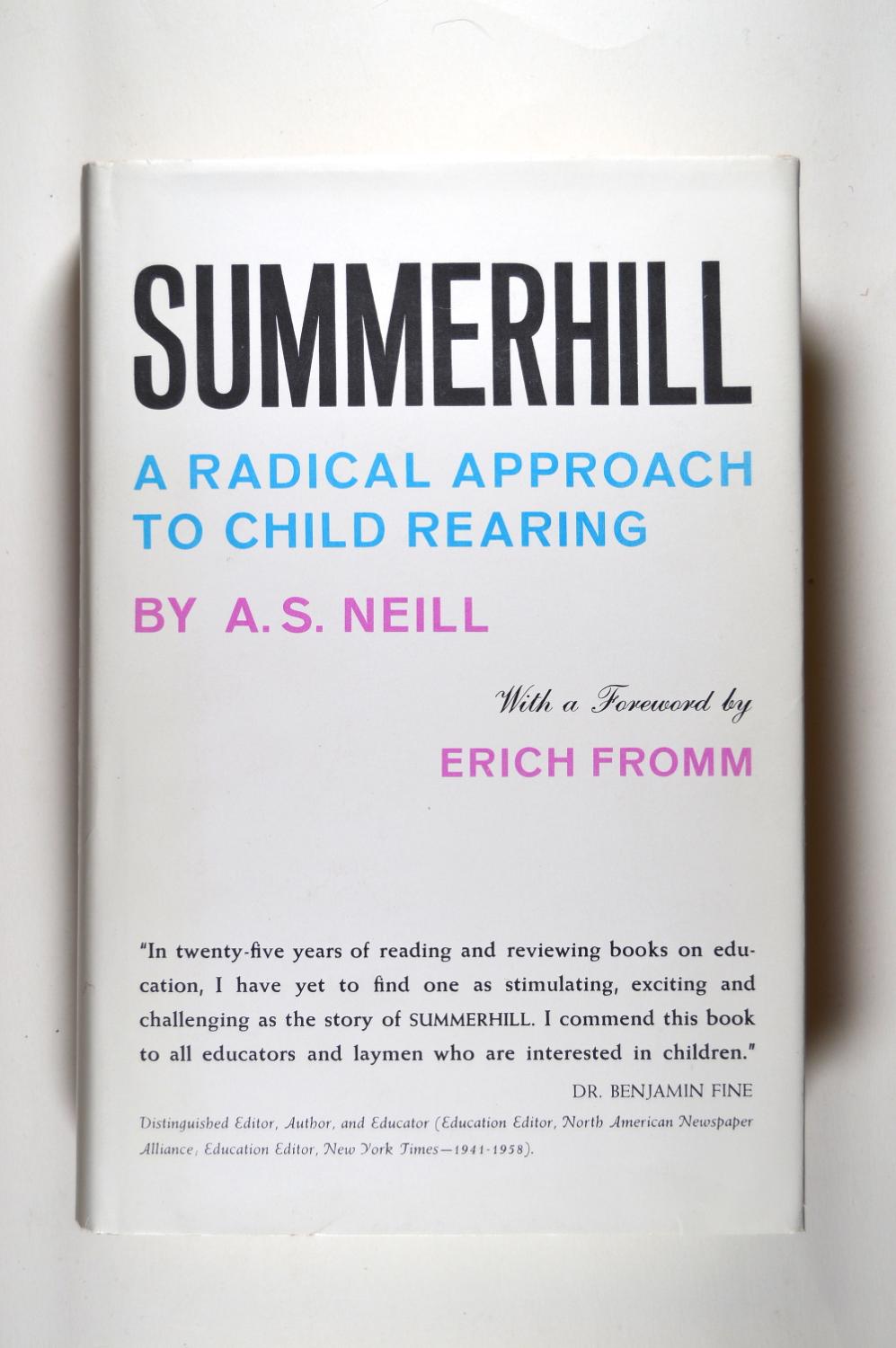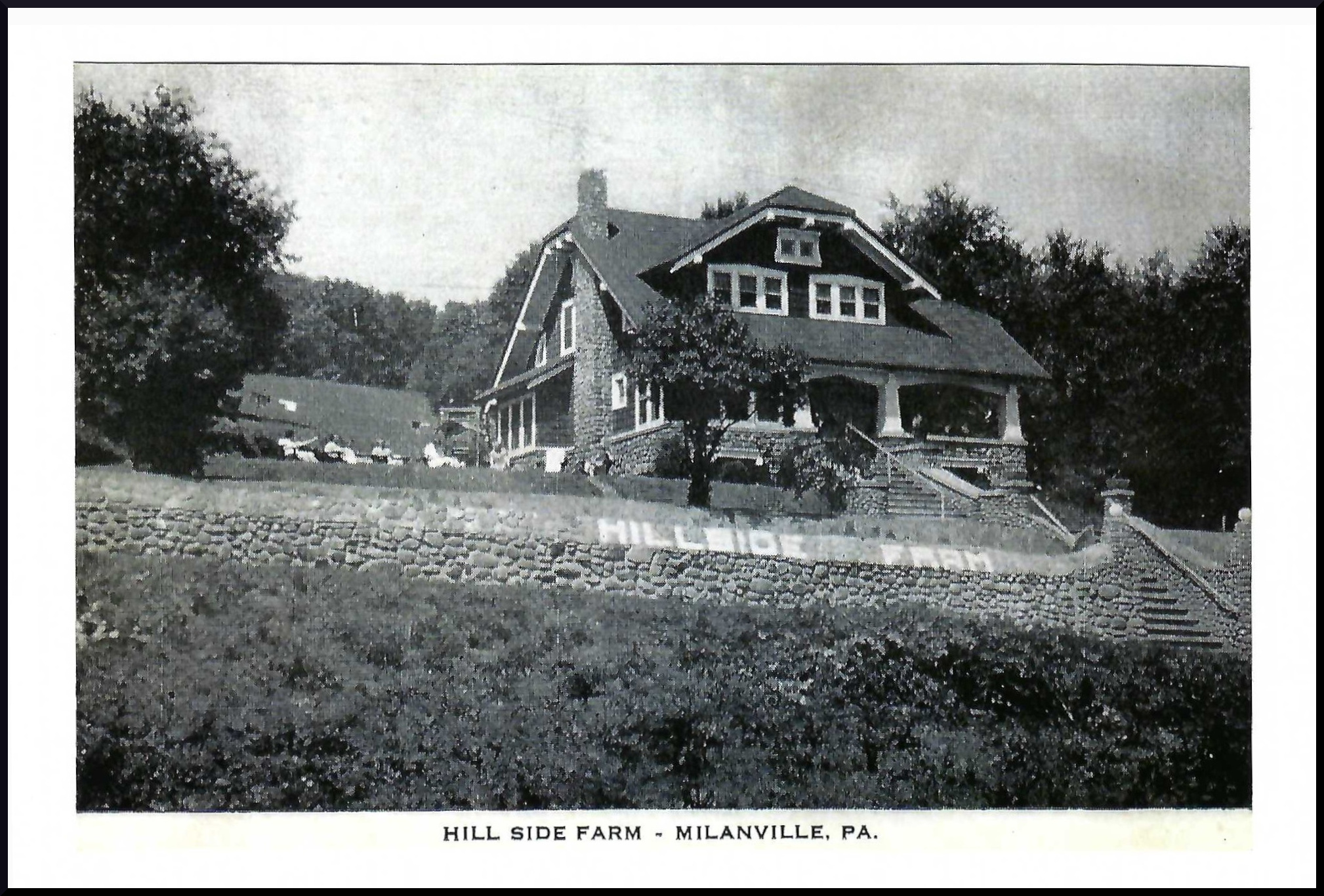Innisfree, 1970-1998
By Tom Rue
Chapter 7 - Valuable stuff in the ground
"I want you to look for valuable stuff in the ground..."
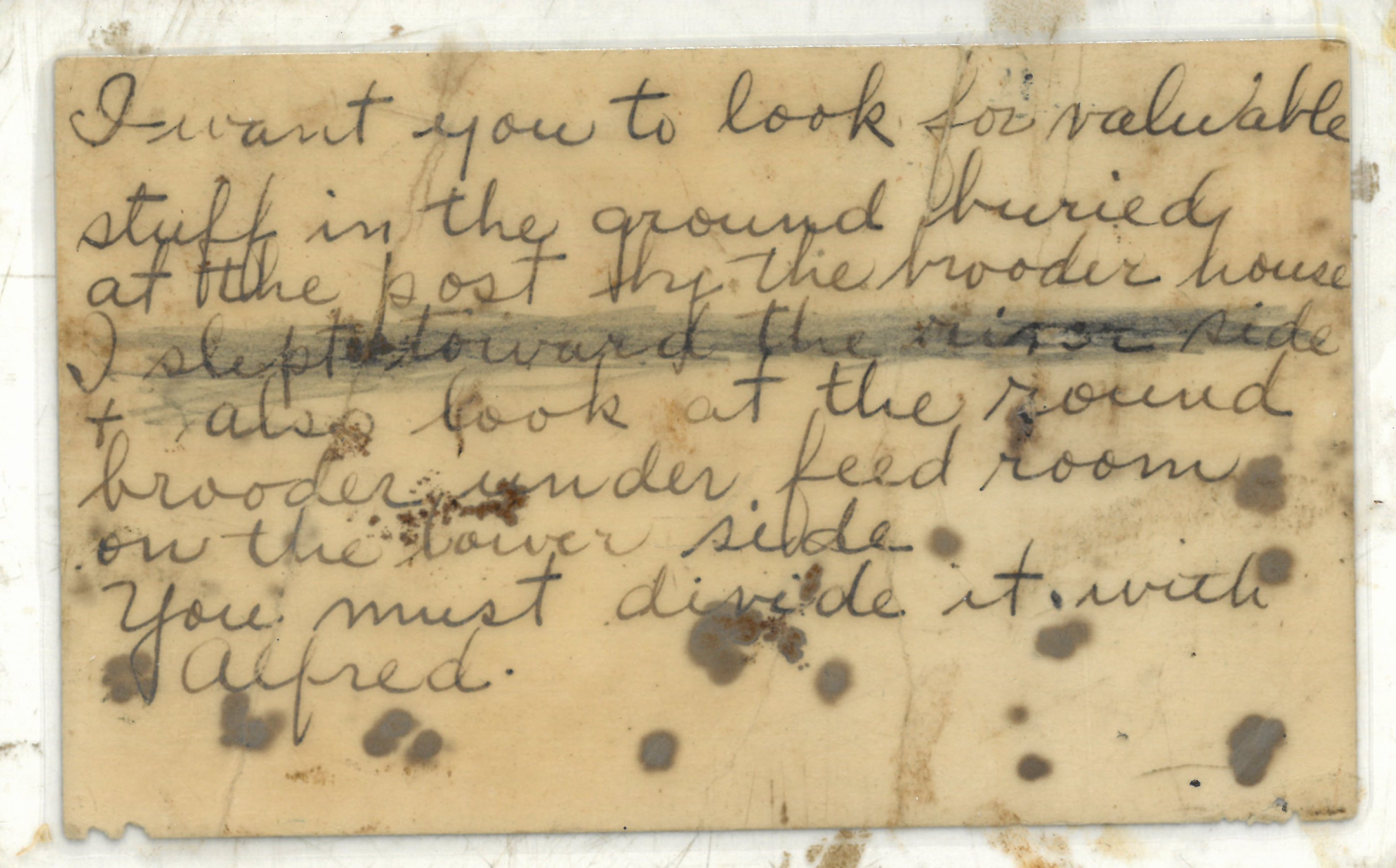
One subject that often came up in conversation with Innisfree guests was the "treasure note" shown at right.
Two years after the settlement of the Ress lawsuit, it seemed the spirits of the place chose to provide Innisfree with the amount which it took to pay off Frank. Shocking treasure-hunters, after more than a year of searching, more than the amount of the Ress settlement, $20,810 in cash, was unearthed beneath "the round brooder house" to south of the garage, uphill from Innisfree's parking lot on River Road. By some means, the ground hung onto this treasure until 1981.

The treasure note was found and returned by locksmith Ed Dill of South Fallsburg, NY, after he dismantled an old two-ton safe that he accepted rom Innisfree in 1981. Mr. Dill found the note inside the safe's wall and took the time to return it. The old safe took up space on the first floor of the dorm (the portion of the building that years later would be damaged by fire) and was used for a while as a cabinet, but never locked. No one from Innisfree ever had its combination, and we had no real need for a two-ton safe anyway. The original note, encased in plastic, is now (2024) in the possession of Cynthia Nash of Milanville.
According to copies of public documents obtained in 1986 under the Freedom of Information Act (Case No. 4-20671-AF) from the Department of Treasury, Bureau of Engraving and Printing, addressed to this writer, the discovery took the form of decomposing American currency buried in rolls for decades under an old abandoned chicken coop, stored in metal buckets and broken glass jars.
The story of the find was featured in the national media, when an official from the U.S. Department of Treasury, Bureau of Mutilated Currency, was interviewed on Ripley's "Believe It Or Not" television show. In April 1984, it was reported on television, a handwritten note had been found inside the wall of a two-ton safe in the basement on a former boarding house in the Poconos. The note said: "I want you to look for valuable stuff in the ground buried at the post by the brooder house. I slept by the river side + also look at the round brooder under the feed room on the lower side. You must divide it with Alfred. The cryptic message was written by the property's original builder, A.J. Thomas. Alfred was his son, by 1986 long deceased. Awareness of this "Believe It Or Not" episode came to Bud Rue's attention when a teacher colleague at Lawrence Junior High School announced in a faculty room, "Hey Rue! I saw your story on TV." The broadcast story was confirmed to be the account, without using names, of the note and buried money left by A.J. Thomas and discovered decades later to help support the physical maintenance of the property Mr. Thomas built and eventually sold.
Officials in Washington, D.C. described the find (which consisted largely of slightly less than 2,000 separate notes, mostly $10, $5 and $20 bills), and the method of processing, as follows:
"Buried currency soaked in water and covered with mud, currency appeared to have been buried for several decades. Notes were rolled in more than 20 wads each held by a rubber band. Although many notes had become a pulp like substance mired with mud, they appeared to be of full value. Some notes were processed whole, while others were processed by the method of duplicating (portraits were used for the most part). Where portraits were not available within individual rolls of currency, other portions of the notes were duplicated, e.g., upper left corners, etc. Predominant Federal Reserve Bank and oldest notes could not be determined because of the deterioration of the currency."
After consulting with legal counsel, it was decided that the buried treasure was the property of the corporation and could justly be used to help maintain the property and defray operating expenses. Interestingly, from the sound of the above note, there might still be a sum secreted on the property somewhere which, to this writer's knowledge, was never found, despite repeated searches and consultations with local psychics. As of June 2024, the current owner of the property has not given up hope of finding it.
A second buried treasure across the street
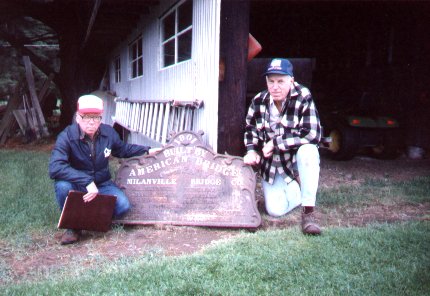
Pictured at right is former Hillside Acres owner Oscar Ropke and Tom VanOrden holding a cast iron commemorative marker which once marked the Skinners Falls/Milanville Bridge. (See article, "Marker to be remounted on Skinners Falls Bridge" by Tom Rue in The River Reporter, June 4, 1992.)
"Ropke said he stumbled across the bracket protruding from the back of the marker while walking his property sometime between 1972 and 1975. 'I tried pulling on it and pretty near pulled my arm off,' he recalled. The marker was reportedly buried face down, near a portable brooder house across River Road from the property currently known as Innisfree, which was built by Ropke's late father-in-law, [A.J. Thomas]. 'I think it was right over here around these hemlocks,' said Ropke," as quoted in the article.
At present (2024), the marker is in the protective custody of the Damascus Township Historical Society while word is awaited from PennDOT concerning the repair and reopening of the bridge.
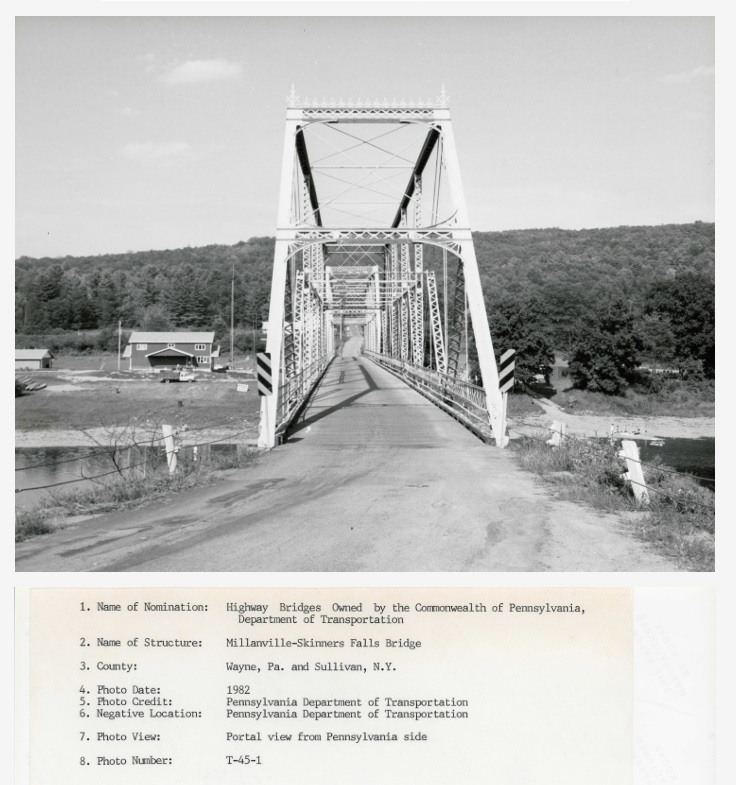
Back: Chapter 6 - Experiential outdoor education | Next: Chapter 8 - Hostel, country inn, retreat


